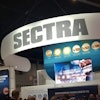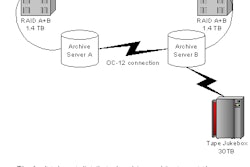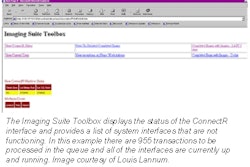SALT LAKE CITY - The belief that PACS improves productivity has become an article of faith so powerful that it can prompt even the stingiest hospital administrators to spend millions. But until recently, PACS proponents had little hard data to back up their claims of improved workflow.
A survey presented on Saturday at the Symposium for Computer Applications in Radiology has shed some light on the matter, however. It found that digital technologies improve the efficiency of radiologic technologists overall. But while that particular finding was expected, the survey yielded some surprises as well, according to presenter Dr. Bruce Reiner of the Baltimore Veterans Affairs Medical Center.
The goal was to develop a quantitative method for measuring RT productivity and to assess factors that affect it, according to Reiner. The ongoing study is a collaborative effort between the SCAR research and development committee and healthcare research firm IMV of Des Plaines, IL.
The study was set up as a five-year longitudinal survey that will continue to track RT productivity over the next few years. In the first round of the survey, 1,774 out of 2,225 departments responded. The facilities polled consisted of 350 imaging centers, 250 hospitals between 100-199 beds, and the rest, hospitals over 200 beds. The survey started in October 1999, and the first round of data collection ended in February 2001. The survey defined a PACS site as a department that had two or more different kinds of modalities with soft-copy review and common archiving.
As a benchmark, Reiner discussed an RT productivity study conducted of film-based departments by the American Healthcare Radiology Administrators between 1992 and 1995. That study found that in 1992, the average full-time equivalent (FTE) technologist conducted 2,705 exams per year. By 1995, productivity had increased 5.7% to 2,859 studies a year.
One of first findings of the SCAR/IMV study was the most surprising. The survey found that facilities with only a RIS installed had RT productivity ratings 10% lower than those that did not have RIS: 3,549 exams per FTE per year at facilities with RIS, vs. 3,948 for those without. Reiner speculated that while the use of a RIS offers productivity gains for the entire department, it actually reduces the productivity of technologists because it requires them to enter data manually into the system.
The findings for PACS installations were more in line with expectations. The survey found that facilities with PACS saw productivity gains that were 15% higher than those without PACS. Specifically, the average RT produced 4,098 studies per year with PACS, and 3,572 without.
Real productivity gains were discovered at those sites that had adopted PACS and had integrated it with their HIS/RIS networks. Technologists at these sites produced an average of 4,274 studies per year, against 3,398 at PACS sites without integrated HIS/RIS. This represents a productivity gain of 26%, and a gain of 36% over sites that had only a RIS installed.
"There certainly is a synergistic effect that the modalities have on one another in increasing technologist productivity," Reiner said.
Although positive, the survey results were not as strong as an analysis of RT productivity that the Baltimore VA conducted of its own operations between 1992 and 1995. This survey found that PACS improved technologist productivity by 40% in the time period measured.
It saved an average of 3 minutes per chest study, 4.9 minutes per portable study, and 7 minutes per orthopedic study. The hospital’s technologist productivity level of over 3,500 exams per FTE per year was 25% higher than the average as measured over the same time period by the AHRA survey of film-based sites, Reiner said.
As expected, the savings came from eliminating steps involved in film processing and transport, Reiner said. In addition, the Baltimore VA experienced fewer lost films (8% to 0.3%), a lower retake rate (from 5% to less than 1%), and reduced levels of technologist fatigue.
What accounts for the Boston VA study's higher productivity levels? It could be an aberration, but Reiner said it could be due to the fact that the Baltimore VA installed its PACS before most of the facilities that participated in the SCAR/IMV study.
Many of these sites are probably experiencing the short-term drop in productivity that sometimes accompanies the transition to new technologies, he said. RT productivity at these sites may increase as their experience with PACS grows, a trend that the SCAR/IMV survey will follow and report on over time, Reiner said.
Session moderator Kathy Andriole, Ph.D. of the University of California, San Francisco, cited the importance of the study in justifying the expense of purchasing digital image and information management technologies. "We invest a lot of money in these computer technologies, and we really need to document, are we doing better or not?"
By Brian Casey
AuntMinnie.com staff writer
May 6, 2001
Click here to post your comments about this story in our PACS Digital Community. Please include the headline of the article in your message.
Copyright © 2001 AuntMinnie.com



















